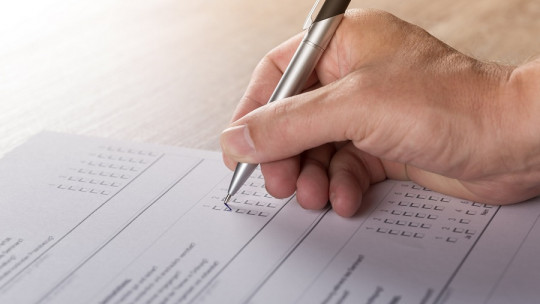Psychometrics is a discipline framed within experimental psychology, which aims to study and determine how psychological tests are constructed. Within it, we find different models that have tried to facilitate this work (the construction of tests).
In this article we will talk about one of these models: item response theory. We tell you what it consists of, what limitations it overcame from its previous model (Classical Test Theory), what it is for and what its basic concepts and characteristics are.
Tests in psychology
In the field of psychology, tests are procedures that allow us to collect large amounts of information (or very specific information) in relation to something we want to find out or study in an individual or a group of them (for example a personality trait). , anxiety, motivation, etc.).
How are the tests constructed? They are prepared from a series of psychometric models that allow us to evaluate the quality of the measurement of said tests as well as obtain certain guarantees from said measure.
In psychometrics (which we will see later what it is), there are different “Theories of Tests”, which configure a framework of reference, both theoretical and methodological, to group the different models and theories that will allow us to construct and use the tests appropriately. . Next we are going to learn about one of these models: Item Response Theory (IRT).
Item response theory (IRT)
Item response theory (IRT), also called “item characteristic curve theory”, “latent trait theory” (TRL) or “item response theory” (RRT), is a theory that is framed within psychometrics. This theory It is used in the field of psychology to construct different psychological tests and tests.
For its part, psychometrics is a part of experimental psychology; It is a discipline, in charge of studying and developing all those methods and theories that are used to measure the psychological variables of people.
Item Response Theory overcame the disadvantages or limitations of a previous theory: Classical Test Theory (TCT). This last theory was developed by Charles Spearman in 1904; This is the theory with which psychometry began (the first), and it intended to explain how from a value in a test, obtained by a person, a true value can be extrapolated or concluded in relation to the manifestation of a characteristic or personality trait that is being studied.
What is TRI for?
The objective of item response theory is to specify what relationship exists between the empirical scores obtained by a subject (or several subjects) in a test, and an unobservable characteristic or trait that is being studied in that subject (or subjects). ). An example of a trait to measure could be impulsivity, extroversion, introversion, etc.
Thus, Item Response Theory helps us build measurement instruments (tests) with properties that do not vary between populations; this way, If two people have the same level of the measured trait, they will both have the same probability of giving the same answer and this is independent of the population to which they belong.
Overcoming the limitations of TCT
As we saw at the beginning, Item Response Theory overcomes some of the limitations presented by Classical Test Theory.
Basics and features
In order to better understand Item Response Theory, let’s look at some of its basic concepts and its most outstanding features :
1. Observed score
We must be clear that the score observed in a test is a random variable, with a certain distribution. This distribution depends on two variables: the level of aptitude or ability of the subject, and how the trait is evaluated by the item (or test).
2. Dimensionality
This concept is also part of Item Response Theory. Dimensionality is a part of the latent trait. Any individual can be described in a trait by determining the values of said dimensions; In practice, we talk about unidimensional models.
3. Local independence
Another characteristic of Item Response Theory is the local independence of the items and the subjects examined. Thus, when we talk about local independence, we mean that the probability p(x) that a subject answers correctly to an item is not influenced by the answers given to other items.
On the other hand, if the unidimensionality mentioned in the previous point is met, local independence in the test is also met.
4. Test information function
Another concept or idea that is part of Item Response Theory is the information function of the test. This function is actually a property that the test has, and it is what allows us to calculate the amount of information that a test can provide us at any level of aptitude.
In this way, the greater value the information function of a test provides for a given aptitude level, the greater discrimination it will have for that level and the less measurement error there will be in the test.
5. Item characteristic curve
This curve, also called a regression curve, represents the expected values in an item on the variable “aptitude”.
Parameters of the item characteristic curve
In relation to this mentioned curve, typical of the Item Response Theory, a series of associated parameters appear, the “item characteristic curve parameters”, which are three and are represented by letters:
1. B: item difficulty
It consists of the fitness level of the subject, which is located at the inflection point of the curve. The greater the shift to the right, the greater the difficulty of the item (the more difficult it is).
2. A: item discrimination
Item discrimination is the slope of the curve; The steeper the slope, the greater the discrimination of the item.
3. C: pseudo-chance or divination
Finally, parameter C is pseudo-chance or guessing; It consists of the probability of getting an item correct by chance, and is measured at the lower asymptote of the curve. For the item to be suitable, this parameter must have a maximum value of 0.35.









